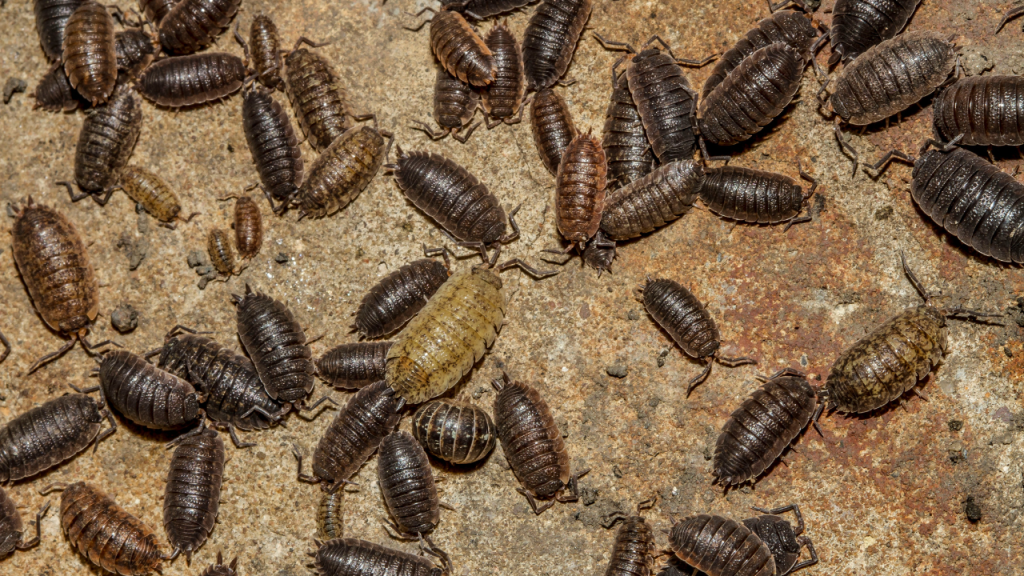If you’ve spotted roly-polies around your house, commonly known as pill bugs or sow bugs, it’s essential to note that they aren’t insects at all. These fascinating creatures are terrestrial crustaceans, sharing more genetic similarities with lobsters, crabs, and shrimp than with typical insects. They have unique breathing mechanisms through gills and are often found in lawn debris.


Rollie pollies prefer to feed at night, and during the daytime, they seek refuge beneath grass or debris that retains moisture. If you encounter them in daylight, it’s a sign that there’s lawn debris around your house. While they play a beneficial role in composting, consuming soil and debris, they can also feed on tender leaves of certain vegetation, making them less-than-ideal neighbors.
If you’d like to see deeper into this topic, watch our video.
The good news is that roly-polies pose no threat in terms of stinging or biting. However, their presence can become a nuisance.. If you find them indoors, it indicates an accumulation of these crustaceans around the exterior of your house.
To prevent a roly-poly invasion, focus on eliminating lawn debris, especially near doors and slabs. Make sure there’s no grass or leaves piled up around entry points, creating a cool, dark, and moist environment that attracts them during the day. By addressing these areas, you can discourage roly-polies from gathering near your home.
It’s crucial to note that the presence of roly-polies might be an indicator of other insects. If you’re dealing with these terrestrial crustaceans, it’s worthwhile to explore broader pest management strategies. For a comprehensive guide on keeping various bugs out permanently, consider watching our video titled “Keeping Bugs Out Permanently.” This resource may offer valuable insights into managing not only roly-polies but other insects as well.
You must be logged in to post a comment.
Monday - Friday
8:00 a.m. - 5:00 p.m.
1012 Morton Street
Richmond, TX, 77469
Map & Directions
Houston Area – 281-342-6969
El Campo – 979-332-9626
FAX – 281-232-6979
© 2023 Gillen Pest Control - All rights reserved
About the author